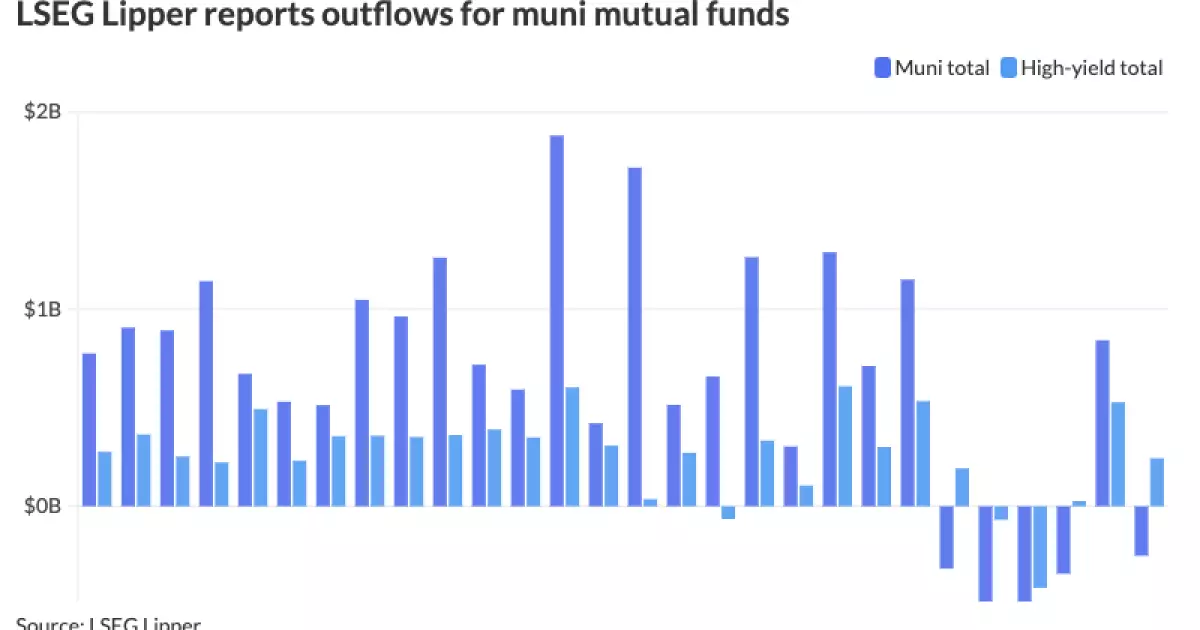The municipal bond market is currently experiencing notable shifts, with demand fluctuations and adjusted yields influencing investor behavior. Recently, the Triborough Bridge and Tunnel Authority successfully expanded its bond offering to approximately $1.6 billion, a move that has had significant ramifications for the municipal bond landscape. These developments occur against a backdrop of slightly firmer municipal yields, contrary to the overall downward trend in U.S. Treasury yields and the decline in equity markets.
The yields of municipal bonds are drawing attention, especially given that they currently sit at some of the highest levels recorded in over a year. This elevation in yields is prompting a range of reactions from market participants, particularly in light of the prevailing economic data, which has exhibited both encouraging and ambiguous signals.
As part of this shifting landscape, the ratio of municipal bonds to U.S. Treasuries is a key indicator of market sentiment. As reported, the two-year municipal-to-UST ratio is holding steady at 67%, with the five-year and ten-year ratios also reflecting a consistent 67% and 69%, respectively. This relative balance indicates a cautious optimism about municipal debt despite external pressures, particularly from governmental fiscal responsibilities and changing interest rate dynamics.
Senior fixed income portfolio manager Kim Olsan has noted that the current environment shows “active two-way flows” along the yield curve, as quality bonds begin to catch investors’ attention. This behavior suggests a market gradually assimilating the higher yield offerings that have emerged, despite underlying risks tied to inflation and interest rate hikes. Importantly, customer demand has shown strong resilience across all maturities of municipal bonds, prompting sizable buying activity that has surpassed typical dealer-to-customer sell ratios.
Recent reports related to consumer and producer price indices have underscored the need for continued vigilance within the bond market. While the consumption data has been described as “bond-friendly,” strong buying behaviors have been observed, particularly within the one- to three-year maturity bands and bonds with longer tenors. For example, significant dealer demand in the short duration market has bolstered yield yields, making these securities particularly appealing to conservative investors.
Olsan points out that such concessions in shorter call maturities can deliver substantial yield bumps. This trend emphasizes the ongoing volatility experienced within the market, often leaving analysts and investors contemplating the impacts of macroeconomic conditions on their portfolios.
Risks Associated with Municipal Bonds
Simultaneously, a rising tide of “bid-wanteds” reflects a cautious market sentiment, casting shadows on the competitive landscape for bond trading. A few factors, including downgrades of municipal credits—most notably associated with Los Angeles bonds—have contributed to yield spreads widening, further complicating the investment decision-making process.
The evolving market framework poses potential risks, especially as some market segments react negatively to credit rating adjustments. Bonds such as those from the Los Angeles Department of Water and Power are feeling the pinch as markets absorb S&P downgrades, leading to wider concessions in pricing and poorer liquidity in certain tranches.
Primary Market Activity and Future Projections
On the front lines of municipal bond issuance, transactions have remained brisk. Notably, the pricing actions of the Triborough Bridge and Tunnel Authority’s capital bond series reflect an aggressive attempt to navigate this complex environment, with notable rates established for various maturities stretching from 2025 to 2059. Furthermore, the Regents of the University of Colorado and Yale University have also entered the fray with sizeable bond offerings, reinforcing the necessity for institutions to seek capital amid shifting economic narratives.
As the municipal bond market continues to react in real-time to changing macroeconomic signals and policy decisions, investor strategies will need to remain flexible. The balance between risk and reward is delicate, and while municipal bonds may offer attractive yields, potential pitfalls exist, particularly rooted in credit quality and overall market volatility.
The recent dynamics of the municipal bond market exemplify a complex interplay of rising yields, adjusting investor sentiment, and varying economic signals. As stakeholders navigate these waters, careful analysis and strategic positioning will be paramount. A vigilant approach will empower investors to capitalize on emerging opportunities while mitigating risks associated with this evolving landscape, especially in times characterized by uncertainty and heightened volatility. Ultimately, while the municipal bond market presents potential avenues for growth, it is essential for participants to remain engaged and informed as new trends and data points materialize.

